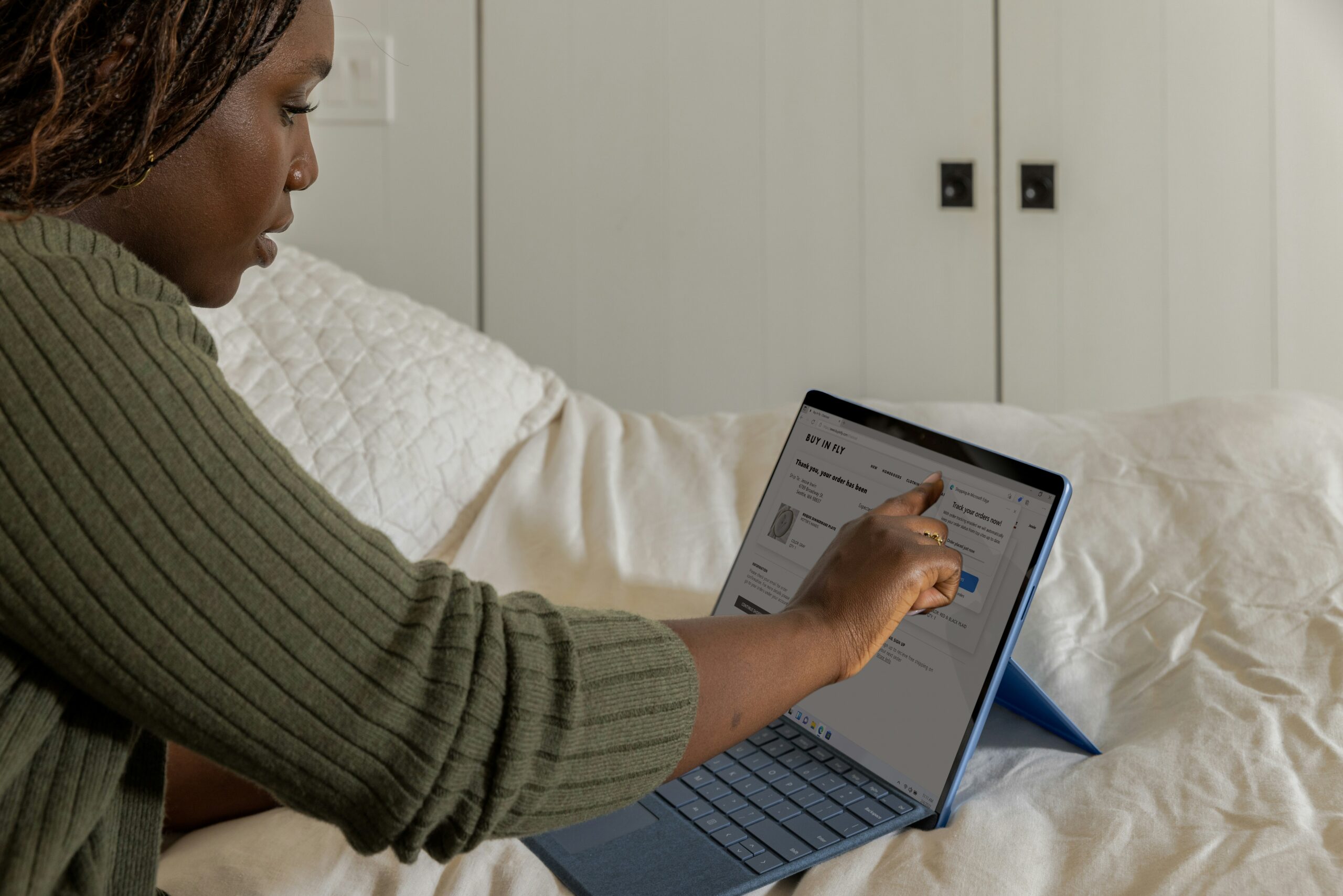Maximize Your Online Security: You Can Be Safer Online by Taking Action
As technology advances, so do the tactics of cybercriminals. Hence, with the growing prevalence of cyber threats and risks, staying safe online is crucial.
At K3 Technology, we emphasize that you can be safer online by taking proactive steps to protect your information and assets. Otherwise known as digital hygiene, these practices involve regularly updating software, using strong passwords, and being mindful when providing personal information. You should also use tools and technologies, such as antivirus software and VPNs, to enhance your cyber security. By implementing these measures, you can mitigate the risk of falling victim to cyber threats and ensure a secure online experience for yourself and your business.

Common Online Threats
Digital safety starts with awareness. You can be safer online by understanding common cyber threats. Consider the following:
Phishing Scams: These are deceitful messages that trick you into revealing personal information. They often look like they’re from a trusted source but lead to dangerous consequences, such as identity theft or financial loss.
Malware: This type of software is designed to harm or exploit any programmable device or network. Without proper safeguards, such as antivirus software, malware can steal data, damage devices, or even take control of your system.
Weak Passwords: Simple or reused passwords make it easy for attackers to gain access to your online accounts. This negligence can lead to unauthorized access to your personal and financial information.
Unsecured Networks: Using public Wi-Fi without protection is risky, as it can expose your device to interceptors. Without secure networks, your sensitive information can be captured by cybercriminals.
This range of cyber threats can lead to dire consequences. Phishing attempts put your financial security at risk. Additionally, malware may lead to a loss of data. Even weak passwords can result in identity theft or financial loss. Thus, it is important to be proactive in your digital habits to mitigate these risks. In short, you can be safer online by staying informed and implementing robust security measures.
Best Practices for Online Safety
You can be safer online by adopting a series of best practices designed to protect your information and assets:
Strong Passwords: Creating complex passwords is a fundamental step in safeguarding your online accounts. Each password should be unique and include a mix of letters, numbers, and symbols to enhance security. This practice significantly lowers the risk of unauthorized access to your personal and financial information.
Regular Software Updates: Keeping your software up to date is crucial. Software updates often include patches for security vulnerabilities that hackers could exploit. By ensuring your operating system and applications are current, you minimize the risk of malware infection and other cyber threats.
Two-Factor Authentication: By implementing 2FA, you’ll need two pieces of information to gain access to your account. Usually this means your password and a code sent to a device or email. It provides an extra barrier against attackers, even if they discover your password.
Careful Sharing of Personal Information: Be mindful of the information you share online, especially on social media. Oversharing can expose you to identity theft and fraud.
Secure Network Use: Always use secure, encrypted connections when accessing the internet, particularly on public Wi-Fi networks. Employing a virtual private network (VPN) can encrypt your online activity, making it harder for hackers to intercept your data.
Online Financial Security: When conducting financial transactions online, it’s essential to ensure that you’re using secure and reputable websites. Look for indicators such as a padlock icon in the address bar and “https://” in the URL, which indicate encrypted connections. Additionally, refrain from sharing sensitive financial information, such as credit card numbers or banking details, through unsecured channels like email or text messages
Each step contributes to a more secure digital environment, safeguarding your personal and professional data from potential online threats.

Tools and Resources for Online Safety
In addition to employing cyber safety best practices, you can be safer online by utilizing specific tools and resources designed to enhance your online security.
Antivirus Software: This is your first line of defense against malware, including viruses, worms, and ransomware. A robust antivirus program scans your device for malicious software and blocks it before it can cause harm. Keeping your antivirus software updated ensures you are protected against the latest threats.
Password Managers: Remembering a unique, complex password for each of your accounts can be challenging. Password managers securely store your passwords and can generate strong passwords for you. This tool minimizes the risk of password-related breaches by keeping your login information safe and encrypted.
Virtual Private Networks (VPNs): A VPN creates a secure connection over the internet, encrypting your data. This is especially important when using public Wi-Fi networks, as it prevents others from intercepting your online activities. With a VPN, your digital footprint is shielded, enhancing your privacy and security.
Secure Web Browsers: Some web browsers are designed with enhanced security features, such as automatic blocking of suspicious websites and tracking protection. Using a secure web browser can protect you from phishing attempts.
Overall, you can be safer online by not only following digital safety best practices, but also by incorporating tools and resources to protect against cyber threats.

Cybersecurity Education
Lastly, you can be safer online by staying informed and educated about the latest cyber security threats and best practices. The digital landscape is constantly evolving, with new threats emerging regularly. It is crucial to keep up with the latest information on how to protect yourself and your data.
Regularly reading articles, attending webinars, and participating in online security training can greatly enhance your knowledge. These resources offer valuable insights into securing your devices, safeguarding your personal information, and recognizing suspicious activities.
Frequently Asked Questions
What is online safety and security?
Online safety and security refer to the measures and practices individuals and organizations adopt to protect themselves from various online threats and risks. This includes safeguarding personal information, financial data, and online activities from unauthorized access, fraud, malware, phishing, identity theft, and other cyber threats. Online safety involves being aware of potential risks, understanding how to mitigate them, and implementing proactive measures to ensure a secure online experience.
How can I create a strong password?
Creating a strong password involves using a combination of letters (both uppercase and lowercase), numbers, and symbols. Avoid using easily guessable information like your name or birthdate, and aim for a password that is at least 12 characters long.
How can I tell if a website is secure for online shopping?
Look for indicators such as a padlock icon in the address bar and “https://” in the URL, which indicate that the website is using encrypted connections. Additionally, read reviews and check for trust signals like security seals to ensure the website is reputable.
How can I protect my mobile devices from online threats?
To protect your mobile devices from online threats, ensure that you download apps only from trusted sources like the Apple App Store or Google Play Store. Keep your device’s operating system and apps updated to the latest versions to patch security vulnerabilities. Additionally, consider installing mobile security apps that offer features such as antivirus protection and remote data wiping in case your device is lost or stolen.
How can I keep my child safe online?
To protect your children’s online safety, establish clear rules and guidelines for internet usage. This includes which websites they can visit and how much time they can spend online. Use parental control tools and software to monitor their online activities and block inappropriate content. Educate your children about online safety practices, such as not sharing personal information online and being cautious when interacting with strangers. Finally, teach your child how to recognize and avoid online threats, such as cyberbullying, online predators, and scams.
What should I do if I suspect I’ve fallen victim to a phishing scam?
If you suspect you’ve fallen victim to a phishing scam, immediately change your passwords for the affected accounts and notify your bank or credit card company if financial information was involved. You should also report the phishing attempt to the appropriate authorities and enable two-factor authentication for added security.
Conclusion: You Can Be Safer Online with These Tips
All in all, you can be safer online by implementing a combination of proactive measures and best practices. By understanding common online threats and taking steps to protect yourself, such as using strong passwords, you can significantly reduce the risk of falling victim to cyber attacks.
Additionally, leveraging tools and resources such as antivirus software, password managers, and virtual private networks can further enhance your online security. Staying informed and educated about the latest cyber security trends is also vital. Remember, online safety is a shared responsibility, and by taking proactive steps to protect yourself, you contribute to a safer digital environment for everyone.






